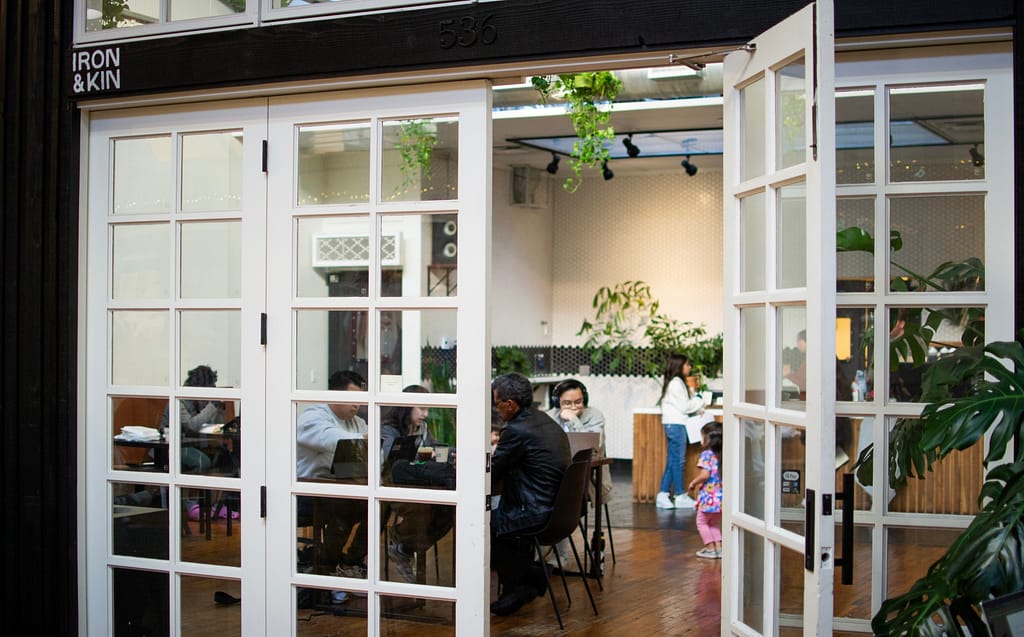[[{“value”:”
In May 2024, SoundPrint released data collected from their crowdsourcing app about sound levels at some of the most popular chain coffee shops. The data, compiled by over 1,400 sound check-ins from app users, found that “Starbucks measured 1-4 decibels louder than other coffee chains,” with the megachain averaging a noise level of 72 decibels (dBA). Dunkin’ averaged 69 dBA, while places like Peet’s and New York’s Think Coffee averaged 71 dBA.
Coffee shops are naturally noisy places. If not for the hum and drum of equipment buzzing, coffee grinders churning, or steam wands whistling, most cafes are filled with the chatter and patter of baristas and customers talking and moving in and out of the space.
But SoundPrint’s new data highlights that even just a decibel or two uptick can significantly impact the difference between what sounds like a pleasant backsplash of noise and what feels disruptive and challenging to hear. Noise in cafes not only affects customers but can rattle workers as well.
Gregory Scott founded SoundPrint when he noticed that some coffee shops were challenging for him because of noise. As someone with hearing loss, “there have been many times where I had a business meeting at a local coffee shop, and I struggled to hear the person,” he says.
Scott says it wasn’t just one type of noise. “The background music was too loud, there was little acoustical treatment, and the environment was harsh for sound—for example, all hardwood floors and glass, the espresso/coffee machines were right next to the tables, etc.”
SoundPrint collects user-submitted decibel readings, called SoundChecks, of cafes and shares them with others. App users can also scroll through data to see if a cafe is “safe for hearing health,” says Scott, or if the noise level at a shop is conducive to conversation.
The decibel readings SoundPrint published sound close together—the difference between a cafe registering 71 dBA versus 73 might read as inconsequential. However, SoundPrint users can also give subjective ratings of different environments based on noise level. Ratings around 66 dBA were generally considered ideal for things like working, studying, or conversing with a friend, while cafes around 74 dBA were deemed difficult.
SoundPrint’s data indicates that around 37% of shops registered a noise level above 74 dBA. For Scott, coffee shops that were too noisy has often meant “not returning to the same coffee shop and finding a quieter one,” he says.
Scott says noise can trigger a sort of domino effect: if one thing is too noisy, that can cause others to raise the volume. “Even if the music is just a little bit loud, it causes people at one table or area to talk a little bit louder (whether it’s on their phone or to a companion), and then other people in the venue will talk louder and so on, thereby creating a louder space just due to slightly elevated music,” he says.
He suggests coffee shop owners consider where speakers are placed or put in items that can dampen noise, like carpets or plants. And noise concerns shouldn’t be limited to consumer concerns.
“I worked at a bakery/coffee shop that not only had the speaker right behind the bar, but I ended up with a weird type of ear infection that gave me hyperacusis (which basically means I hear too much),” says Brit Alexandria, a lead barista and regular contributor at Fresh Cup. “Some days were really hard to cope with if they didn’t turn [the speakers] down.”
Alexandria says they have severe sound sensitivity associated with Attention-deficit/hyperactivity disorder, so “sound-dampening earplugs help me function in high-volume environments.” They now work in a lower-volume cafe, so Alexandria says earplugs aren’t always needed.
Long shifts with music blaring and the hustle and bustle of customers could have long-term consequences for workers. The Occupational Safety and Health Administration requires workplaces to have a “hearing conservation program” if employees are exposed to sound registering above 85 dBA for eight or more hours a day. The National Institute on Deafness and Other Communication Disorders says, “sounds at or below 70 A-weighted decibels (dBA) are generally safe. Long or repeated exposure to sounds at or above 85 dBA can cause hearing loss.”
For some, the noise is inevitable. Emily Burns is the co-owner of Til Death, a coffee shop in Brooklyn located right under the Central stop on the M line.
Burns says there’s not much they can do about the noise. “It’s kind of a joke at this point,” she says. “If the train is coming by, the customer just stops mid-sentence. We point to the train and giggle, then begin again once it’s passed.” For events, Burns says they warn patrons and performers and let them know when to expect the train.
Noise is an unavoidable and often welcome part of any cafe experience. The buzz of a coffee shop can be inviting, but noise can quickly become disruptive and harmful if not discussed or considered. For some spaces, like Til Death and other shops located in noisy places, it can be challenging to work around sound, but working around noisy conditions can help welcome more patrons and keep the buzz going.
Cover photo by Sadie Scott
“}]]


